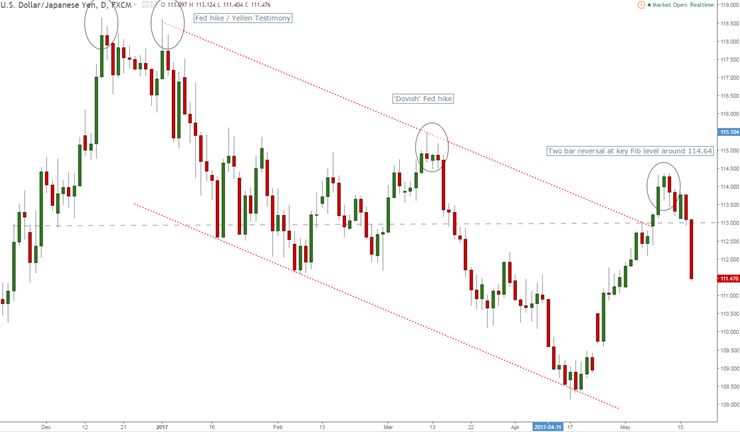After last week’s conjecture about the many ‘fear gauges’ being eerily quiet, we have finally seen risk aversion in full effect. This has shaken the markets out of its VIX torpor with gold up, treasury yields off and a very strong yen.
Investors are worried about the latest crisis to hit the Trump administration. Along with revelations about him sharing confidential information with the Russian foreign minister, we now hear that the president urged former FBI Director Comey to drop an investigation into former NSA Director Mike Flynn. This latest development has left investors increasingly concerned that the political controversy will hurt the president’s ability to push through his reflation policies.
The VIX has finally popped higher with its largest increase intraday since November 3, just before the US election of course. The dollar index, conversely, is at a six-month low and is well below its 200-day moving average. With US 10-year yields dropping 5 basis points, this environment of broad-based risk aversion is perfect for the yen to strengthen.
We can see on the USD/JPY daily candle chart key levels over the last year. The pair got above 118 at the start of 2017 after the Fed hike and Yellen’s testimony. We then drifted lower to 115 just before the ‘dovish’ hike and before making a low of 108.13. From mid April, we’ve had a risk-on retracement, which took prices very close to the 61.8% Fibonacci retracement of the December-April high-low around 114.64. This level actually formed a classic 2-bar reversal pattern with the second bar clearly rejecting the first thrust.

USD/JPY has come off this level aggressively from trading just above 113 early Thursday. 113 was critical as it represents a number of key Fibonacci levels. Such a critical break of resistance resulted in a sharp sell-off Thursday, breaking through 112 to reach 111.51.
If President Trump can't overcome the strengthening tide of unrest, we could see the 5-week retrace move as simply a further continuation of the downtrend from December last year. In that case, 108.13 will potentially come on to trader’s radars, especially if the soft patch of US data becomes something more than ‘transitory’.
